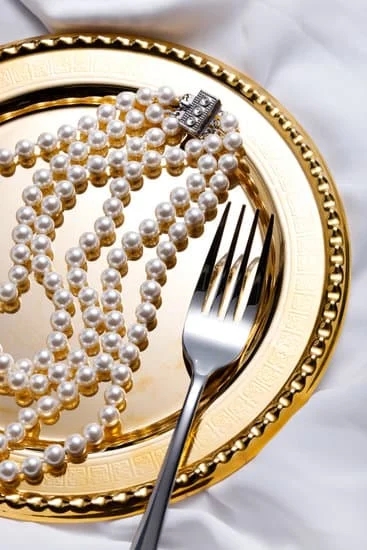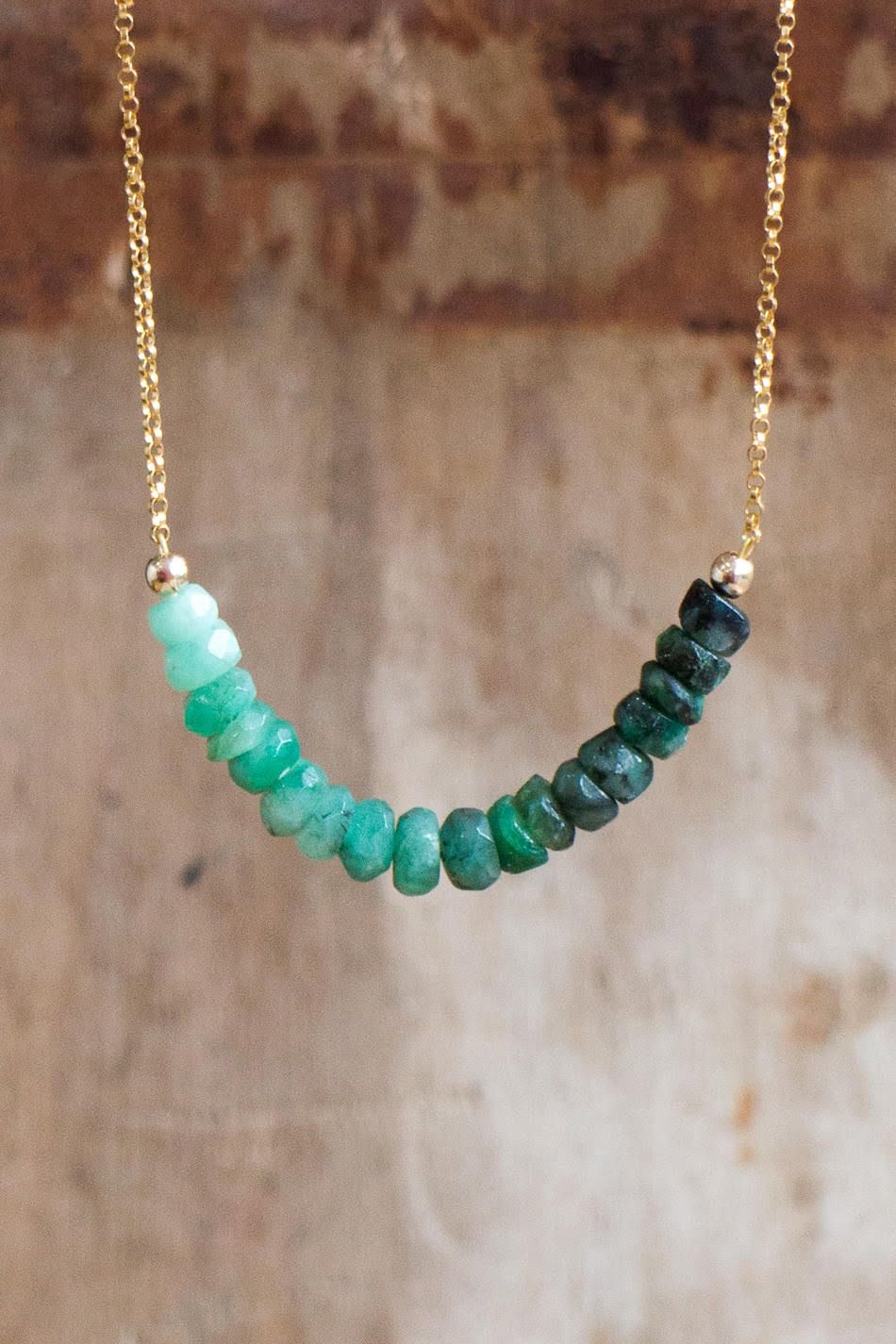Creating fine jewelry from the comfort of your own home is a rewarding and fulfilling hobby that allows you to express your creativity while making beautiful treasures. Whether you’re a beginner or an experienced jewelry designer, this article will provide you with the essential knowledge and skills to embark on your own journey in crafting fine jewelry.
In this comprehensive guide, we will take you through each step of the process, starting with gathering the necessary tools and materials for your projects. We will explore the wide array of gemstones available and provide a comprehensive guide on how to choose the perfect stones for your designs.
You will also learn the fundamental techniques needed to create various types of jewelry, including wire wrapping, beading, and metalwork. Step-by-step tutorials will help you master these techniques and bring your designs to life. Additionally, we’ll delve into how to incorporate personalized elements into your jewelry pieces, creating unique and sentimental pieces to cherish.
Understanding design principles is essential in creating stunning jewelry creations. We will discuss how to balance colors, shapes, and textures in order to achieve visually appealing results. Moreover, we’ll guide you in developing your own signature style and aesthetic for a cohesive fine jewelry line.
As you continue honing your craft, we’ll share tips and tricks that will help refine your skills and perfect your designs. From expert advice on photographing your creations to strategies for marketing them effectively, we’ll equip you with the tools needed to showcase and share your homemade fine jewelry with others.
Whether you have always been fascinated by the art of fine jewelry-making or are looking for a new creative outlet, this guide is here to inspire and support you every step of the way. So prepare yourself for an exhilarating adventure as we dive deep into the world of making fine jewelry at home.
Gathering Your Supplies
As an aspiring jewelry designer, it is crucial to have the right tools and materials to bring your creative visions to life. Here is a comprehensive list of essential supplies that every jewelry designer should have:
- Pliers – Pliers are one of the most basic and versatile tools for jewelry making. They come in various types such as round-nose pliers, chain-nose pliers, and flat-nose pliers. These are used for bending wires, creating loops, and holding small components.
- Wire cutters – A good pair of wire cutters is essential for cutting different gauges of wire accurately. Make sure to choose wire cutters that have a sharp edge to prevent fraying or damaging the wire.
- Beading needles – These thin, flexible needles are designed specifically for beading projects. They make it easier to string beads onto wires or threads, especially when working with smaller beads.
- Jewelry adhesives – Depending on your preferred techniques and materials, you may need jewelry adhesives such as epoxy resin, super glue, or specific adhesives designed for gemstones or metals. These allow you to securely attach components together.
- Gemstones – Gemstones are one of the main attractions in fine jewelry designs. From semi-precious stones like amethyst and turquoise to precious stones like diamonds and rubies, there is a wide variety to choose from depending on your design aesthetic and budget.
- Metals – Whether you’re working with gold-filled wire or sterling silver sheet metal, having high-quality metals is vital for creating durable and long-lasting pieces. Consider investing in a variety of metals like copper or brass to add diversity to your designs.
- Beads and findings – Beads come in endless shapes, sizes, colors, and materials (glass beads, freshwater pearls, crystal beads) that can add a unique touch to your creations. Findings such as clasps, jump rings, ear wires, and chains are essential for connecting and finishing your jewelry pieces.
- Jewelry-making books and tutorials – While not physical supplies, having access to educational resources is crucial for learning new techniques and expanding your skills as a jewelry designer. Invest in books or online tutorials that cater to different aspects of jewelry making, such as wire wrapping, beading stitches, or metalwork techniques.
Remember to start with the basics and gradually expand your collection of tools and materials as you progress in your jewelry-making journey. By having these essential supplies at hand, you’ll be well-equipped to bring your creative ideas to life and create stunning fine jewelry from the comfort of your own home.
Choosing the Right Gemstones
When it comes to creating fine jewelry at home, one of the most important considerations is choosing the right gemstones. The gemstones you select can greatly impact the overall look and quality of your jewelry. In this section, we will provide a comprehensive guide to help you navigate the world of gemstones and select the perfect stones for your jewelry projects.
Determining Your Budget
Before delving into the world of gemstones, it is essential to determine your budget. Gemstones can vary greatly in price, from affordable options like cubic zirconia or plain quartz to rare and valuable stones like diamonds or emeralds. By setting a budget beforehand, you can narrow down your options and focus on finding gemstones that fit within your financial constraints.
Considering Quality Factors
When selecting gemstones for your jewelry projects, it is crucial to consider their quality factors. These factors include color, clarity, cut, and carat weight. Each type of gemstone has its own unique set of quality considerations.
For example, with diamonds, clarity and cut are extremely important whereas with colored gemstones like rubies or sapphires, color plays a more significant role. Educate yourself on these factors specific to each type of stone and make informed decisions based on your preferences and desired aesthetic.
Exploring Different Types of Gemstones
The world of gemstones is vast and diverse, offering a wide range of options to choose from. From traditional favorites like diamonds and pearls to more unique choices like opals or garnets, there is something for every taste and style. Take the time to explore different types of gemstones, their characteristics, and their meanings to find ones that resonate with you personally.
By following this comprehensive guide to selecting gemstones for your jewelry projects, you can ensure that each piece you create is of the highest quality and reflects your personal style. Experiment with different types of gemstones and don’t be afraid to mix and match them for truly unique creations. With the right gemstones, you can elevate your homemade fine jewelry to a whole new level of beauty and elegance.
Mastering Basic Jewelry Techniques
Once you have gathered your supplies and chosen the right gemstones for your fine jewelry projects, it’s time to dive into the art of jewelry making by mastering basic techniques. Whether you’re interested in wire wrapping, beading, or metalwork, gaining proficiency in these fundamental skills will allow you to create beautiful and intricate designs. In this section, we will provide step-by-step tutorials to help you get started on your jewelry-making journey.
- Wire Wrapping: Wire wrapping is a versatile technique that can be used to create various jewelry pieces such as earrings, pendants, and rings. To begin with wire wrapping, you’ll need some basic tools like wire cutters, pliers, and round-nose pliers. Start by choosing a suitable gauge of wire depending on the project and design you have in mind.
Then learn how to make basic wire components such as loops and spirals. From there, you can progress to more advanced techniques like creating wire-wrapped bezels for gemstones or incorporating different weaving patterns. - Beading: Beading is a popular technique that involves stringing beads together to create necklaces, bracelets, or even intricate beadwork designs. Begin by selecting the type of beads you want to use – from glass beads to gemstone beads – as well as the stringing material such as nylon thread or beading wire.
Learn how to properly secure the thread or wire and explore different bead weaving techniques like peyote stitch or brick stitch. Experiment with adding focal beads or creating patterns with different colors and sizes of beads. - Metalwork: Metalwork allows you to manipulate metals like silver or gold into unique shapes and structures for your jewelry designs. Start by acquiring essential tools like a jeweler’s saw, files, hammer, soldering iron (if you plan to solder), and a bench pin.
Begin with basic metalworking techniques such as sawing, filing, and soldering to create simple shapes like circles or squares. As you gain confidence, you can progress to more intricate designs by exploring techniques like piercing, texturing, or stone setting.
By following these step-by-step tutorials on wire wrapping, beading, and metalwork, you’ll be well on your way to mastering the basic techniques of jewelry making. Remember to practice regularly and experiment with different materials and designs to enhance your skills and creativity. With time and dedication, you will be able to create stunning fine jewelry pieces that showcase your unique style and craftsmanship.
Adding a Personal Touch
One of the most rewarding aspects of making fine jewelry at home is the ability to add a personal touch to your designs. Incorporating personalized elements not only adds a unique flair to your creations but also allows you to create meaningful pieces that hold sentimental value. In this section, we will explore different ways you can personalize your fine jewelry designs.
Engraving
Engraving is a popular method for adding a personal touch to jewelry. Whether it’s initials, names, or special dates, engraving can make a piece of jewelry truly one-of-a-kind. You can choose to have your design engraved by a professional jeweler or purchase an engraving tool and do it yourself at home. From delicate fonts to intricate patterns, the possibilities for engraving are endless.
Birthstones
Incorporating birthstones into your fine jewelry designs is another wonderful way to add personalization. Birthstones are gemstones associated with each month of the year and hold special significance. From necklaces and bracelets to rings and earrings, birthstones can be incorporated into various jewelry pieces. Consider including birthstones of loved ones or even your own birthstone in your designs as a meaningful touch.
Customized Charms
Charms are small decorative pieces that hang from necklaces or bracelets and often carry symbolic meanings. Adding customized charms to your fine jewelry designs can be a beautiful way to tell a story or represent something important to you. You can create customized charms by using metal stamping techniques or by working with a jeweler who specializes in custom-made pieces.
By incorporating engravings, birthstones, and customized charms into your fine jewelry designs, you can give each piece a personal touch that makes it truly special. Whatever method you choose, remember that the goal is to create jewelry that reflects your individuality and celebrates the connections you have with others. Personalized elements not only add value to your designs but also make them cherished keepsakes for years to come.
Understanding Jewelry Design Principles
Creating fine jewelry is not just about putting beautiful gemstones together; it also involves understanding and applying design principles to achieve stunning creations. Understanding how to balance colors, shapes, and textures can elevate your jewelry designs to the next level. In this section, we will delve into the key principles of jewelry design that can help you create visually appealing and harmonious pieces.
One important aspect of jewelry design is color theory. Colors have a profound impact on our emotions and can evoke different moods and feelings. When designing jewelry, it’s important to consider the colors of the gemstones, metal accents, and other materials used.
Complementary colors (those opposite each other on the color wheel) can create vibrant contrast, while analogous colors (those adjacent to each other) can create a harmonious and soothing effect. Experimenting with various color combinations can help you find what works best for your designs.
Shapes also play a significant role in jewelry design. Different shapes evoke different feelings and convey different messages. For example, round shapes are often associated with femininity and softness, while geometric shapes like squares or triangles can give off a more modern or edgy vibe. Mixing different shapes in your designs can add visual interest and intrigue to your pieces.
Textures add depth and dimension to jewelry designs. By incorporating different textures such as smooth vs. rough surfaces or shiny vs. matte finishes, you can create contrast that adds visual appeal to your creations. Consider combining gemstones with different surface finishes or mixing metals with varied textures to introduce tactile elements.
Understanding jewelry design principles takes time and practice. It’s essential to experiment with different combinations of colors, shapes, and textures until you find what resonates with your unique style aesthetic. By mastering these principles, you can create stunning fine jewelry that captivates both you and those who wear your creations.
| Color Theory | Shapes | Textures |
|---|---|---|
| Colors have a profound impact on emotions | Different shapes evoke different feelings | Textures add depth and dimension |
| Complementary and analogous colors | Mixing shapes adds visual interest | Different surface finishes and mix of materials |
Creating Your Signature Style
When it comes to creating your own fine jewelry line, one of the most important aspects is developing a unique aesthetic that sets your designs apart. Your signature style will be what makes your jewelry instantly recognizable and appealing to customers. In this section, we will explore some tips and strategies to help you develop your own unique aesthetic for your fine jewelry line.
First and foremost, it is essential to find inspiration for your designs. Take time to research and explore various jewelry styles, both traditional and contemporary. Look at different materials, techniques, colors, and shapes that catch your eye. Take note of what resonates with you personally and start collecting images or samples of designs that inspire you. This can include anything from nature-inspired motifs to geometric patterns or even cultural influences.
With inspiration in mind, start experimenting with different design elements to create something truly distinctive. Consider incorporating unconventional materials or unexpected combinations of gemstones and metals. Don’t be afraid to try out new techniques or take risks with your designs. Remember, developing a unique aesthetic requires exploring outside of your comfort zone.
Additionally, take into consideration the feedback you receive from others. Showcase your designs to family members, friends, or even potential customers for their opinions and suggestions. While it’s important to stay true to your vision, taking constructive criticism into account can help you refine and further develop your signature style.
| Jeweler | Signature Style |
|---|---|
| Tiffany & Co. | Elegant simplicity with iconic pieces like the Tiffany Setting engagement ring |
| Alexis Bittar | Artistic and edgy designs featuring bold colors and unique materials |
| Irene Neuwirth | Nature-inspired jewelry using vibrant gemstones in organic shapes |
By studying the signature styles of successful jewelers, you can gain insights into what makes a distinct aesthetic and apply those principles to your own designs.
Remember, developing a unique aesthetic for your fine jewelry line is an ongoing process. It will evolve and change as you gain more experience and continue to explore new inspirations. Embrace this journey of creativity and enjoy the freedom that comes with expressing your own personal style through your handmade jewelry designs.
Honing Your Craft
Once you have mastered the basic jewelry techniques and created a few pieces, it’s time to take your skills to the next level. Honing your craft is crucial for refining your skills and perfecting your jewelry designs. Here are some tips and tricks to help you on your journey:
- Practice makes perfect: The more you practice, the better you will become at creating fine jewelry. Set aside dedicated time each day or week to work on your craft. Experiment with different techniques and materials to expand your skill set and challenge yourself.
- Learn from others: Take advantage of workshops, classes, or online tutorials to learn from experienced jewelers. They can provide valuable insights, tips, and techniques that can take your jewelry-making skills to new heights. Additionally, joining a local jewelry-making group or community can provide opportunities for feedback and collaboration with fellow artists.
- Develop a unique style: As you continue to hone your craft, focus on developing a signature style that sets your jewelry apart from others. Experiment with different color combinations, textures, shapes, and design elements to create something truly unique. Don’t be afraid to push the boundaries of traditional jewelry design and let your creativity shine through.
- Pay attention to details: The small details can make a big difference in the overall look of your jewelry designs. Take the time to polish each piece meticulously, ensuring that there are no rough edges or imperfections. Pay attention to the placement of gemstones or beads, making sure they are secure and symmetrical.
- Seek feedback: Getting feedback from others is essential for growth as an artist. Share your work with trusted friends or fellow jewelers who can offer constructive criticism and suggestions for improvement. This feedback can help you identify areas where you excel and areas where you can continue refining your skills.
Remember, honing your craft is an ongoing process. It takes time and dedication to become a master at creating fine jewelry. Embrace the learning journey, stay open to new techniques and ideas, and continue to challenge yourself creatively. With persistence and passion, you can refine your skills and create stunning jewelry designs that reflect your unique style and creativity.
Showcasing Your Creations
Once you have created your homemade fine jewelry pieces, it’s time to showcase them to the world. One of the most important aspects of showcasing your creations is effectively photographing them. High-quality, well-lit photographs can make a significant difference in attracting potential customers and capturing the intricate details of your jewelry.
To achieve stunning images, consider investing in a good camera or smartphone with high-resolution capabilities. Additionally, you may want to purchase a lightbox or create a DIY set-up using natural light to ensure that your pieces are well-illuminated and there are no unwanted shadows.
When photographing your homemade fine jewelry, it’s essential to focus on capturing the unique features and craftsmanship. Experiment with various angles, close-ups, and different backgrounds to create visually appealing images that highlight the beauty of your creations. Additionally, pay attention to composition and arrangement; staging your jewelry with props or other complementary items can elevate the overall aesthetic of your photographs.
After capturing beautiful images of your homemade fine jewelry, it’s time to market and promote your creations. Utilize various online platforms such as social media sites (like Instagram and Pinterest), e-commerce websites (such as Etsy or Shopify), and even personal blogs or websites dedicated solely to showcasing and selling your jewelry.
In addition to these online avenues, consider participating in local craft fairs or art shows where you can personally connect with potential customers and allow them to see your pieces up close.
When marketing your homemade fine jewelry, emphasize the uniqueness of each piece by highlighting its design elements, materials used, and any special techniques employed during creation. Also, consider offering promotions or discounts for first-time customers or hosting giveaways on social media platforms to generate interest in your work.
By focusing on effective photography techniques and utilizing various marketing strategies both online and offline channels, you can successfully showcase and promote your homemade fine jewelry. Remember to be consistent in your efforts, continuously update your online platforms with new designs, and engage with your audience to build a loyal customer base and gain recognition for your creative talent.
Conclusion
As we conclude this guide on how to make fine jewelry-chicago/” target=”_blank” rel=”follow noopener”>jewelry at home, it is clear that handcrafting jewelry can be a joyous and creative endeavor. Through the exploration of various techniques, the selection of beautiful gemstones, and the incorporation of personalized elements, you have the power to create stunning and unique pieces that reflect your personal style.
One of the most rewarding aspects of making fine jewelry at home is the ability to develop your own signature style. By experimenting with different design principles, such as balancing colors, shapes, and textures, you can create truly captivating creations that stand out from the rest. This process allows you to tap into your artistic abilities and express your personality through your jewelry designs.
However, mastering the craft of jewelry making takes time and dedication. As you continue to hone your skills and refine your techniques, remember to be patient with yourself. It is through practice and perseverance that you will perfect your jewelry designs and reach new heights in craftsmanship.
Lastly, don’t forget about showcasing your creations. Whether it’s through photography or marketing strategies, sharing your homemade fine jewelry with others is an important step in both gaining recognition for your work and finding inspiration for future projects.
In conclusion, discovering the joy and creativity in handcrafting fine jewelry at home is a fulfilling journey. By following this guide’s tips and suggestions, you are well-equipped to embark on this creative adventure. So go forth confidently, armed with knowledge, passion, and tools in hand – may each piece you create be a testament to your artistic expression and a source of joy for others. Happy crafting.

Welcome to my jewelry blog! My name is Sarah and I am the owner of this blog.
I love making jewelry and sharing my creations with others.
So whether you’re someone who loves wearing jewelry yourself or simply enjoys learning about it, be sure to check out my blog for insightful posts on everything related to this exciting topic!





